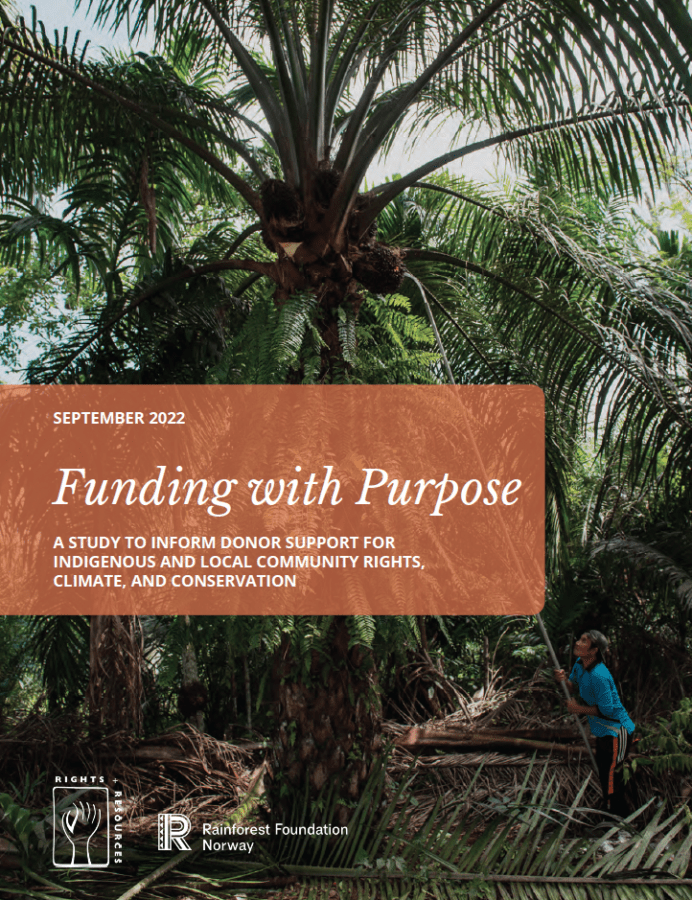Date: September 14, 2022
This report assesses donor funding for IPs’ and LCs’ tenure and conservation between 2011 and 2020 to learn from historical trends and outline key opportunities to improve the effectiveness of this funding over the next five years. It proposes to make donor funding more fit for purpose—which means that climate, conservation, and rights funding is channeled in ways that are relevant and appropriate for IPs and LCs and ensures funding engagements are led by their organizations—and flexible, long-term, gender-inclusive, timely and accessible, and mutually accountable.
The report findings, organized according to the “Fit for Purpose” criteria for IP and LC funding, include:
-
- IP and LC-led: Only 17 percent of IP and LC tenure and forest management funding between 2011 and 2020 mentioned an IP or LC organization, indicating that a low share of funding is under the leadership of Indigenous and community organizations.
- Mutually Accountable: There is a lack of accountability and transparency from donors towards IPs and LCs, inhibiting IP and LC understanding and influence over donor priorities and decisions. Most private foundations, who represent the majority of the IPLC Forest Tenure Pledge donors, do not share data on their projects systematically.
- Flexible and Long-term: Donors have increasingly been providing funding through long-term funding agreements, which provides IP and LC organizations with much-needed predictability and security. Yet, a lack of flexibility to change or adapt priorities within projects restricts IP and LC organizations in addressing diverse community needs, imminent threats or seize on windows of opportunity.
- Gender Inclusive: Only 32 percent of IP and LC tenure and forest management funding included gender-related keywords, despite the essential role of women in IP and LC forest management and their notable exclusion from many governance structures and forest management decisions.
- Timely and Accessible: Due to strict eligibility and administrative requirements of bilateral and multilateral donors, IP and LC organizations must overcome considerable barriers to access funding. Funding for IP and LC tenure and forest management has therefore generally relied on traditional ODA funding structures, with national and international organizations acting as intermediaries.
https://doi.org/10.53892/WRFV7289

